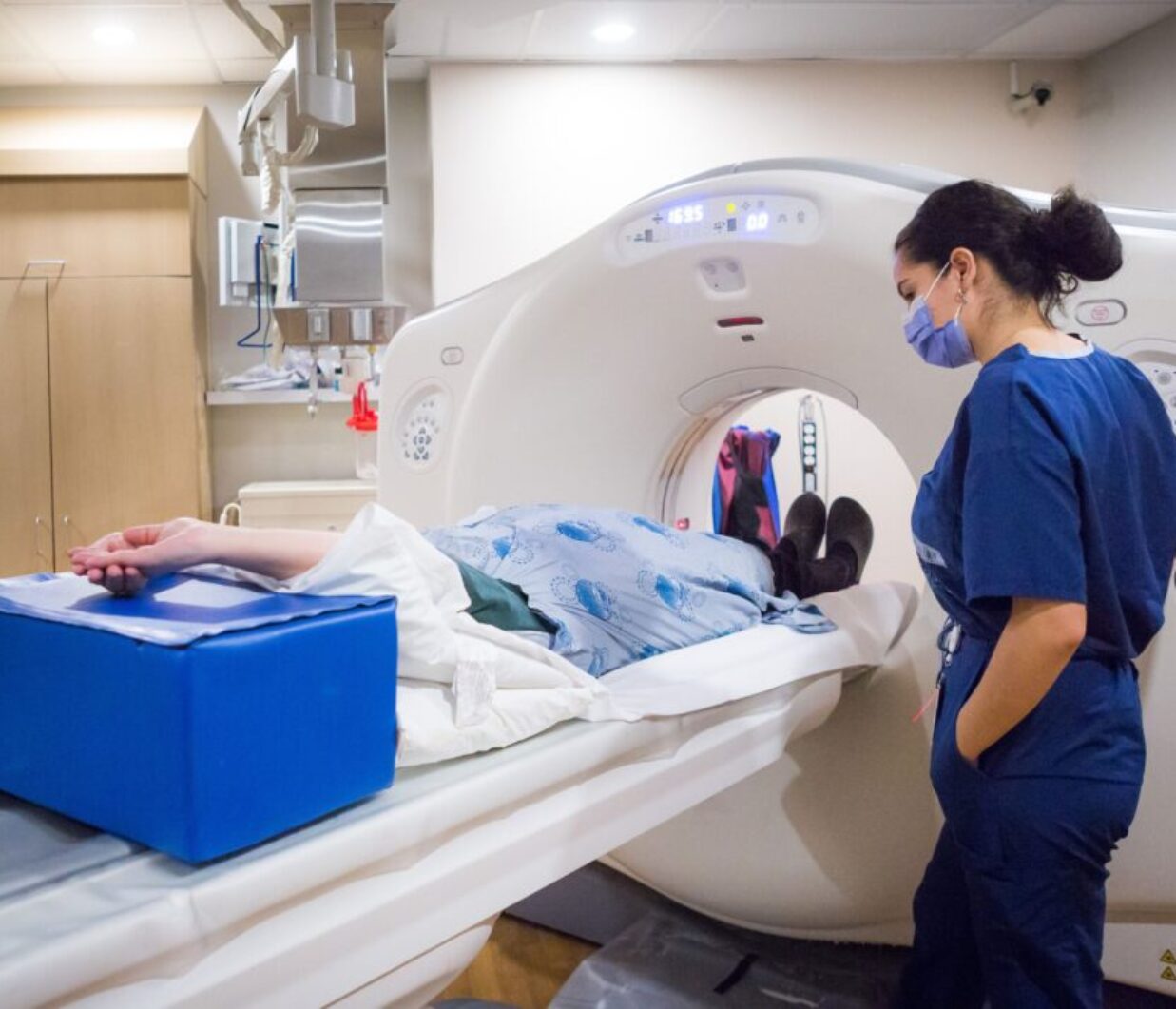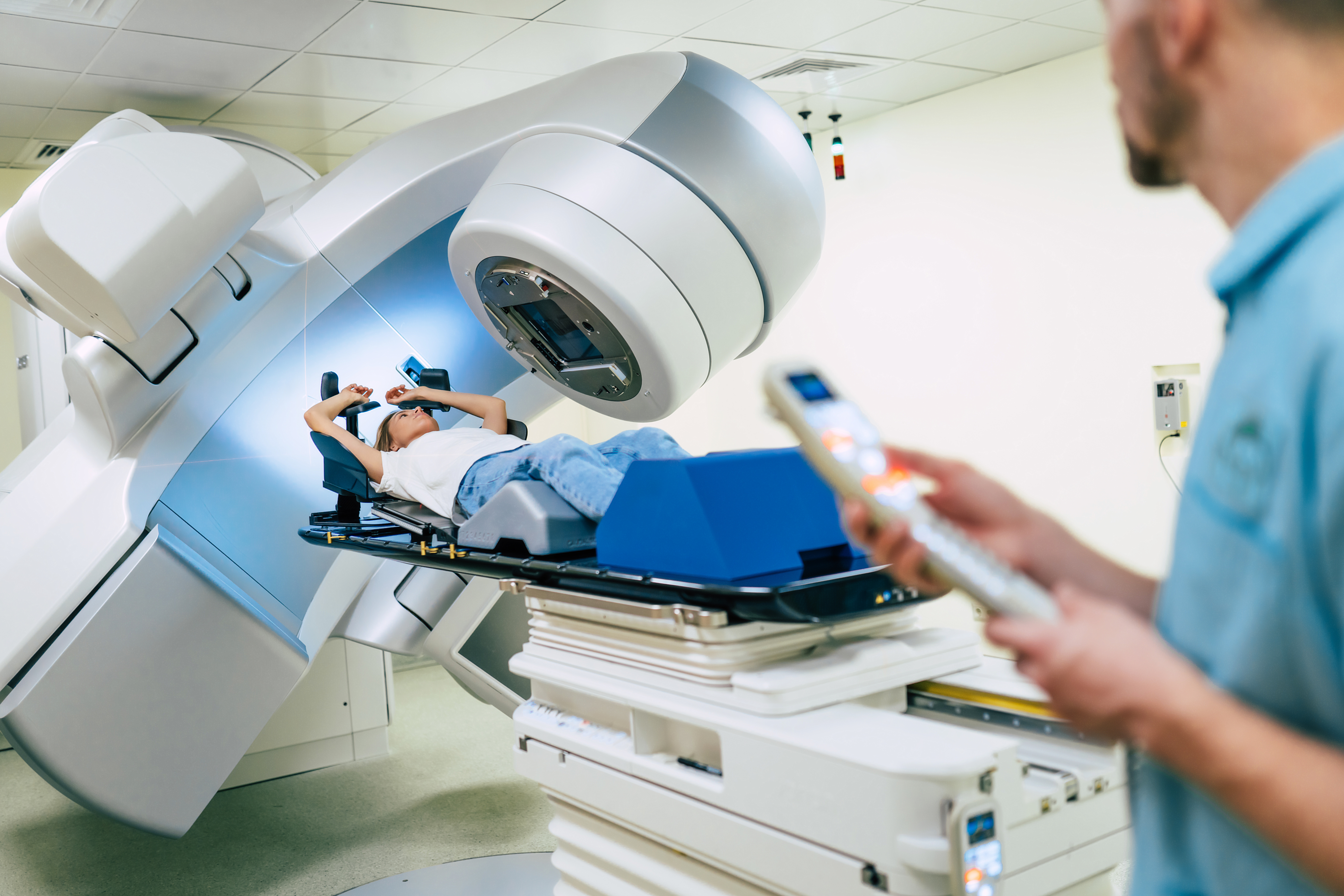MRT Roles in
Breast Cancer

Patients encounter many different types of healthcare professionals on their journeys. It can be difficult to keep track of all the people involved in your care. Medical Radiation Technologists (MRTs) are highly educated professionals involved in the care of millions of Canadians each year through medical imaging and radiation therapy.
If you have breast cancer, MRTs are a vital partner in your care who provide care at multiple points along your journey, including diagnosis, investigation, treatment and follow up. We want to show you all the different times and ways MRTs care for patients with breast cancer.
Getting a Diagnosis
Obtaining More Information to Guide Your Optimal Care
- Breast MRI: during a breast MRI, an MRT specializing in MRI imaging, will take detailed images of the ducts, glands, lymph nodes and fatty tissue of your breasts. These images will show more detail about the disease in your breasts and surrounding tissues.
- Contrast Enhanced Mammogram: A mammographer will take images of your breast after they inject a dye that will make the area of interest clearer.
- CT Scan: during a CT scan, an MRT specializing in CT Imaging, will image the structures in your neck, chest, abdomen and pelvis to see if the cancer cells have traveled to other places, or metastasized.
- Nuclear Medicine Bone Scan: for a bone scan, an MRT specializing in Nuclear Medicine, will administer a radioactive pharmaceutical to take images of the bones in your body to see if the cancer has spread.
- Sentinel Node Biopsy: during a Sentinel node biopsy an MRT specializing in Nuclear Medicine will help map the first lymph nodes that the affected breast drains into. These images will help the surgeon when it comes time to biopsy or remove the cancer.
Based on the information gathered from the imaging from the MRTs and the biopsy results, your oncology team will decide the best course of treatment for you.
Imaging will continue to be an important part of your care through all phases of your journey. Whether you have surgery, use chemotherapy and/or undergo radiation therapy, imaging will be used to visualize the cancer and monitor progress.
Getting Your Treatment
Based on the details of your diagnosis, you may receive radiation therapy as part of your treatment plan. MRTs specializing in radiation therapy (radiation therapists), will be key members of your care team for this part of your journey as they plan and deliver your radiation treatments.
Your Radiation therapists will:
- use a CT or MRI scan in the radiation therapy department to plan the angles and shapes of the area to be treated with radiation
- carefully plan the proper radiation dose for each of your treatments.
- care for you as they administer and precisely target the radiation through advanced technology.
On your visits to the radiation oncology department, your specialist MRTs play a key role in answering your questions. MRTs will help you manage the side effects of the radiation therapy and offer support with things such as childcare, psychosocial referrals, transportation assistance etc.
Post Treatment and Recovery
As you go throughout your treatment, it is common to have ongoing imaging done to review the effects of your treatment on your cancer. This may come in the form of a MRT doing repeat MRI scans on your breasts, or other MRTs doing a bone scan and CT scan to see if the cancer is shrinking or has spread to other areas.


